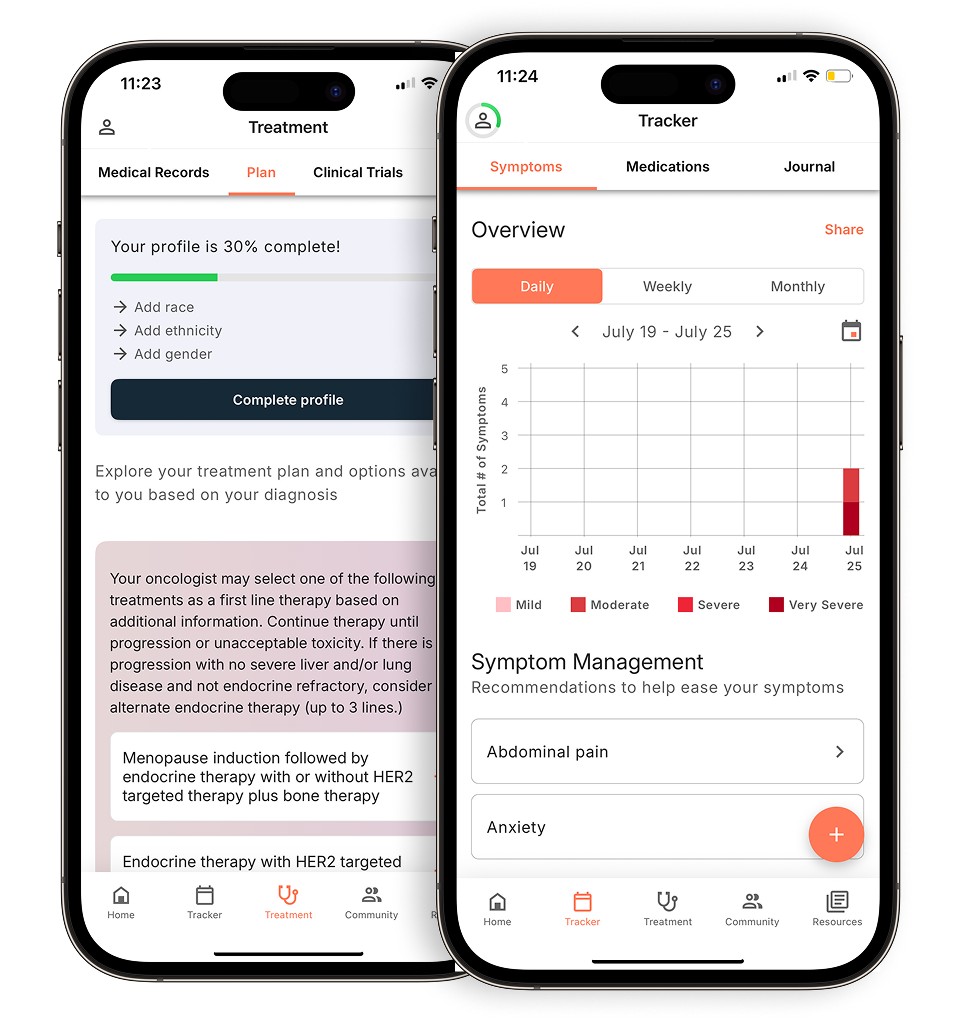What’s the difference between palliative care and hospice care?
Palliative care is sometimes confused with hospice care, but the two disciplines–while related–are actually different. Hospice care focuses on providing physical, emotional, and spiritual support and comfort for people nearing the end of life, where palliative care can play a vital role in the ongoing treatment of anyone with a serious illness. A primary differentiator between the two practices is that palliative care can be given with or without curative intent.
What’s the goal of palliative care?
The goal of palliative care is to address the symptoms of a serious illness, such as cancer, or side effects from treatment–in an effort to improve a patient’s quality of life. As this American Cancer Society resource states regarding palliative care, “It’s designed to work with the health care team to help people with a serious illness live as well as they can for as long as they can.” Palliative care can also serve as a support system for caregivers, alongside patients.
Who delivers palliative care?
Palliative care is delivered by a multidisciplinary care team. For instance, at Beth Israel Deaconess Medical Center in Boston, the palliative care team includes physicians, nurse practitioners, social workers, and interfaith chaplains. Additional medical professionals may also support a patient’s palliative care, including nutritionists, physical therapists, pharmacists, music and art therapists, and home health aides.
How can palliative care support cancer care?
Palliative care can augment a patient’s treatment at any point during their cancer care in the following ways:
- Support pain management
- Facilitate conversations about treatment plans and prognosis
- Connect patients with psychosocial support
- Create an exercise and/or nutrition plan
- Provide spiritual guidance and resources if requested
- Provide a transition to hospice care if and when needed
How can you gain access to palliative care?
The American Society of Clinical Oncology recommends palliative care for all patients with an advanced cancer (e.g. Stage IV) diagnosis, but any cancer patient (regardless of age or cancer stage) can receive palliative care. Ask your medical oncologist if you’re a good candidate for palliative care, and if you are then ask them for a referral to the appropriate providers.
How do you pay for palliative care?
Private insurers typically cover palliative care, as do Medicare and Medicaid, though you may have a copay. It’s a good idea to reach out to your insurer before you pursue palliative care so you can confirm coverage and also understand any related out-of-pocket costs you may incur to receive palliative care.
Palliative care can play an important role in your cancer treatment–helping you to enjoy life and lessen symptoms of active treatment. If you have questions about how to approach palliative care, you can connect with an Outcomes4Me oncology nurse practitioner at no charge to you when you download the free Outcomes4Me app.
Personalized support for real care decisions
Understand your diagnosis, explore clinical trials, and track symptoms--all in one place.
Get started
Compare treatments, prepare for appointments, and track side effects—all in the app
Built for your diagnosis, Outcomes4Me gives you the tools to make confident, informed decisions—right when you need them.
Continue in app






